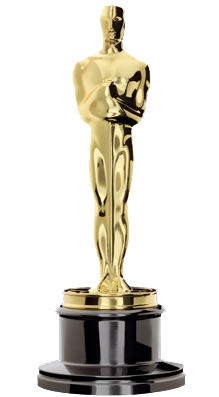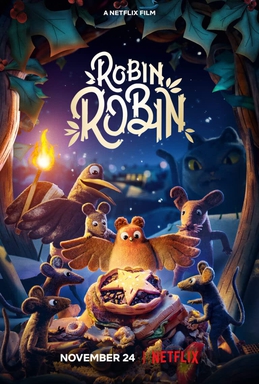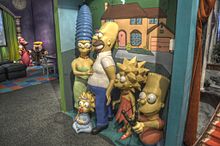
The Academy Awards of Merit, commonly known as the Oscars or Academy Awards, are awards for artistic and technical merit for the film industry. They are presented annually by the Academy of Motion Picture Arts and Sciences (AMPAS) in the United States, in recognition of excellence in cinematic achievements as assessed by the Academy's voting membership. The Oscars are widely considered to be the most prestigious awards in the film industry.

The Academy Award for Best Animated Feature is given each year for the best animated film. An animated feature is defined by the academy as a film with a running time of more than 40 minutes in which characters' performances are created using a frame-by-frame technique, a significant number of the major characters are animated, and animation figures in no less than 75 percent of the running time. The Academy Award for Best Animated Feature was first awarded in 2002 for films released in 2001.
The Academy Award for Best Animated Short Film is an award given by the Academy of Motion Picture Arts and Sciences (AMPAS) as part of the annual Academy Awards, or Oscars, since the 5th Academy Awards, covering the year 1931–32, to the present.
Modern animation in the United States from the late 1980s to the early 2000s is frequently referred to as the renaissance age of American animation. During this period, many large American entertainment companies reformed and reinvigorated their animation departments, following the dark age, and the United States had an overall profound effect on animation globally.
The term independent animation refers to animated shorts, web series, and feature films produced outside a major national animation industry.

Walt Disney Animation Studios (WDAS), sometimes shortened to Disney Animation, is an American animation studio that creates animated features and short films for The Walt Disney Company. The studio's current production logo features a scene from its first synchronized sound cartoon, Steamboat Willie (1928). Founded on October 16, 1923, by brothers Walt Disney and Roy O. Disney, it is the oldest-running animation studio in the world. It is currently organized as a division of Walt Disney Studios and is headquartered at the Roy E. Disney Animation Building at the Walt Disney Studios lot in Burbank, California. Since its foundation, the studio has produced 62 feature films, from Snow White and the Seven Dwarfs (1937) to Wish (2023), and hundreds of short films.
Mark Dindal is an American filmmaker, animator and voice actor known for his work in Disney classics including the direction of The Emperor's New Groove (2000), which was nominated for several awards, notably an Oscar, a Golden Globe, a Grammy and two Critics’ Choice. Working for Disney, he was also responsible for animating feature films that became animation classics such as The Little Mermaid (1989), Tom and Jerry: The Movie (1990) and Aladdin (1992). In 1997, after he has moved to Warner Bros, his directorial debut Cats Don't Dance won the Annie Award for Best Animated Film.
Sony Pictures Animation Inc. is an American animation studio owned by Sony Entertainment's Sony Pictures Entertainment through their Motion Picture Group division and founded on May 9, 2002. Most of the studio's films are distributed worldwide by Sony Pictures Releasing under their Columbia Pictures label, while direct-to-video releases are released by Sony Pictures Home Entertainment.

Titmouse, Inc. is an American animation studio based in Los Angeles, California founded in 2000 that develops and produces animated television programming, feature films, music videos, title sequences, commercials, and short films.

Cartoon Saloon is an Irish animation film, short film and television studio based in Kilkenny which provides film TV and short film services. The studio is best known for its animated feature films The Secret of Kells, Song of the Sea, The Breadwinner and Wolfwalkers. Their works have received five Academy Award nominations, their first four feature length works all received nominations for Best Animated Feature and one for Best Animated Short Film. The company also developed the cartoon series Skunk Fu!, Puffin Rock, Dorg Van Dango and Viking Skool. As of 2020, the studio employs 300 animators.
Animation historian Jerry Beck had posted on Cartoon Research lists of animated shorts from various studios considered for nomination of the Academy Award for Best Animated Short Film, beginning with 1948 and ending for the time being with 1986.

Alberto Mielgo is a Spanish director, artist, and animator. His accolades include an Academy Award, four Emmy Awards and two Annie Awards. Mielgo was an Art Director at Disney's Tron: Uprising (2013) and made his debut as a director with animated short film "The Witness" (2019) created for Netflix anthology: Love, Death & Robots.

Robin Robin is a 2021 stop-motion animated musical short film produced by Aardman Animations, created and directed by Dan Ojari and Mikey Please, and written by Ojari, Please, and Sam Morrison.
In the United States, before the enforcement of the Hays Code, some cartoon shorts contained humor that was aimed at adult audience members rather than children. Following the introduction of the Motion Picture Association of America film rating system, independent animation producers attempted to establish an alternative to mainstream animation. Initially, few animation studios in the United States attempted to produce animation for adult audiences, but later examples of animation produced for adults would gain mainstream attention and success. Adult animation in the United States includes shows with superhero, sci-fi, and fantasy elements. Some of the most prominent animations with these mature/adult themes include Aqua Teen Hunger Force, BoJack Horseman, South Park, Family Guy, Mission Hill, and Archer, along with other adult animated television series, feature films, and animation in other forms which helped the genre expand over the years, beyond animated sitcoms.
Arthouse animation is a combination of art film and animated film.

The Windshield Wiper is a 2021 Spanish-American computer-cel adult animated short film directed and co-produced by Alberto Mielgo alongside Leo Sánchez. The film won the award for Best Animated Short Film at the 94th Academy Awards.








